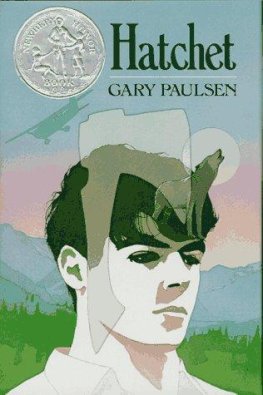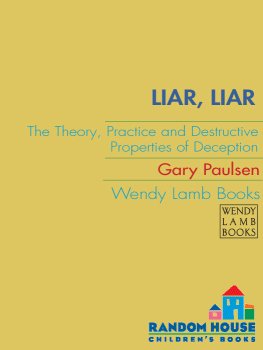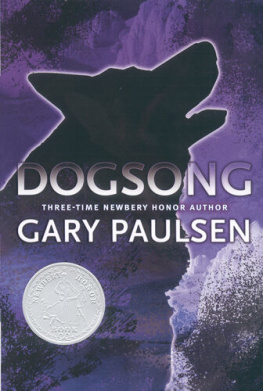
Leonardo
Roger F. Malina, Executive Editor
Sean Cubitt, Editor-in-Chief
White Heat and Cold Logic: British Computer Art 19601980, edited by Paul Brown, Charlie Gere, Nicholas Lambert, and Catherine Mason, 2008
Rethinking Curating: Art after New Media, Beryl Graham and Sarah Cook, 2010
Green Light: Toward an Art of Evolution, George Gessert, 2010
Enfoldment and Infinity: An Islamic Genealogy of New Media Art, Laura U. Marks, 2010
Synthetics: Aspects of Art and Technology in Australia, 19561975, Stephen Jones, 2011
Hybrid Cultures: Japanese Media Arts in Dialogue with the West, Yvonne Spielmann, 2012
Walking and Mapping: Artists as Cartographers, Karen ORourke, 2013
The Fourth Dimension and Non-Euclidean Geometry in Modern Art, revised edition, Linda Dalrymple Henderson, 2013
Illusions in Motion: Media Archaeology of the Moving Panorama and Related Spectacles, Erkki Huhtamo, 2013
Relive: Media Art Histories, edited by Sean Cubitt and Paul Thomas, 2013
Re-collection: Art, New Media, and Social Memory, Richard Rinehart and Jon Ippolito, 2014
Biopolitical Screens: Image, Power, and the Neoliberal Brain, Pasi Vliaho, 2014
The Practice of Light: A Genealogy of Visual Technologies from Prints to Pixels, Sean Cubitt, 2014
The Tone of Our Times: Sound, Sense, Economy, and Ecology, Frances Dyson, 2014
The Experience Machine: Stan VanDerBeeks Movie-Drome and Expanded Cinema, Gloria Sutton, 2014
Hanan al-Cinema: Affections for the Moving Image, Laura U. Marks, 2015
Writing and Unwriting (Media) Art History: Erkki Kurenniemi in 2048, edited by Joasia Krysa and Jussi Parikka, 2015
Control: Digitality as Cultural Logic, Seb Franklin, 2015
New Tendencies: Art at the Threshold of the Information Revolution (19611978), Armin Medosch, 2016
Screen Ecologies: Art, Media, and the Environment in the Asia-Pacific Region, Larissa Hjorth, Sarah Pink, Kristen Sharp, and Linda Williams, 2016
Pirate Philosophy: For a Digital Posthumanities, Gary Hall, 2016
Social Media Archeology and Poetics, edited by Judy Malloy, 2016
Practicable: From Participation to Interaction in Contemporary Art, edited by Samuel Bianchini and Erik Verhagen, 2016
Machine Art in the Twentieth Century, Andreas Broeckmann, 2016
Here/There: Telepresence, Touch, and Art at the Interface, Kris Paulsen, 2017
See for a complete list of titles in this series.
Here/There
Telepresence, Touch, and Art at the Interface
Kris Paulsen
The MIT Press
Cambridge, Massachusetts
London, England
2017 Massachusetts Institute of Technology
All rights reserved. No part of this book may be reproduced in any form by any electronic or mechanical means (including photocopying, recording, or information storage and retrieval) without permission in writing from the publisher.
This book was set in Stone Sans and Stone Serif by Toppan Best-set Premedia Limited. Printed and bound in the United States of America.
Library of Congress Cataloging-in-Publication Data
Names: Paulsen, Kris, author.
Title: Here/there : telepresence, touch, and art at the interface / Kris Paulsen.
Other titles: Herethere
Description: Cambridge, MA : The MIT Press, [2017] | Series: Leonardo book series |
Includes bibliographical references and index.
Identifiers: LCCN 2016025430 | ISBN 9780262035729 (hardcover : alk. paper)
eISBN 9780262338233
Subjects: LCSH: Art and telecommunication. | Telepresence--Psychological aspects. |
Television--Psychological aspects. | Remote control--Psychological aspects. | Video
art. | Virtual reality.
Classification: LCC N72.T45 P38 2017 | DDC 777--dc23 LC record available at https://lccn.loc.gov/2016025430
ePub Version 1.0
For the artists
Series Foreword
Leonardo/International Society for the Arts, Sciences, and Technology (ISAST)
Leonardo, the International Society for the Arts, Sciences, and Technology, and the affiliated French organization Association Leonardo have some very simple goals:
- To advocate, document, and make known the work of artists, researchers, and scholars developing the new ways that the contemporary arts interact with science, technology, and society.
- To create a forum and meeting places where artists, scientists, and engineers can meet, exchange ideas, and, when appropriate, collaborate.
- To contribute, through the interaction of the arts and sciences, to the creation of the new culture that will be needed to transition to a sustainable planetary society.
When the journal Leonardo was started some forty-five years ago, these creative disciplines existed in segregated institutional and social networks, a situation dramatized at that time by the Two Cultures debates initiated by C. P. Snow. Today we live in a different time of cross-disciplinary ferment, collaboration, and intellectual confrontation enabled by new hybrid organizations, new funding sponsors, and the shared tools of computers and the Internet. Above all, new generations of artist-researchers and researcher-artists are now at work individually and collaboratively bridging the art, science, and technology disciplines. For some of the hard problems in our society, we have no choice but to find new ways to couple the arts and sciences. Perhaps in our lifetime we will see the emergence of new Leonardos, hybrid creative individuals or teams that will not only develop a meaningful art for our times but also drive new agendas in science and stimulate technological innovation that addresses todays human needs.
For more information on the activities of the Leonardo organizations and networks, please visit our websites at http://www.leonardo.info/ and http://www.olats.org.
Roger F. Malina
Executive Editor, Leonardo Publications
ISAST Governing Board of Directors: Nina Czegledy, Greg Harper, Marc Hebert (Chair), Gordon Knox, Roger Malina, Tami Spector, Darlene Tong
Acknowledgments
In one way or another, I have been working on this book since I graduated from college, and as such I have accrued a long list of mentors, friends, and institutions to thank for their support. Here/There began as a dissertation written under the direction of Kaja Silverman in the Rhetoric Department at the University of California at Berkeley. I could not have asked for a more inspiring and impressive mentor or a more open and stimulating place than UC Berkeley, which provided me with my other advisors, Anne M. Wagner, David Bates, and Ken Goldberg, whose profound influence can be seen on every page of this book. Even before Berkeley, Roger Mayer, Michael Silverman, Paul Badger, Elizabeth Weed, Kermit Champa, and K. Dian Kriz at Brown University all shaped this project in ways they could not possibly have foreseen.
I need to thank all of my colleagues in the Department of History of Art at The Ohio State University for their patience and support of this project. Judy Andrews, Gwyn Dalton, Mark Fullerton, Amanda Gluibizzi, Ron Green, Barbara Groseclose, Barbara Haeger, Byron Hamann, Christian Kleinbub, Erica Levin, Tim McNiven, Andrew Shelton, Karl Whittington, and Mollie Workman all deserve my profound appreciation. In particular, Lisa Florman and Namiko Kunimoto, who read every word of this manuscript several times over, deserve my heartfelt gratitude and appreciation. This book has been greatly improved by their help and friendship; I cannot thank them enough. Columbus, Ohio has provided an exceptionally rich intellectual community, the members of which have made my time and work here more fruitful and enjoyable. I have been aided in numerous ways by The Wexner Center for the Arts, The Columbus Museum of Art, the OSU Film Studies Program, the OSU Department of Art, and the Arts Initiative. In particular I need to extend my appreciation to Bill Horrigan, Sherri Gelden, Chris Stults, Jennifer Lange, Dave Filipi, Amanda Potter, Shelly Casto, Tyler Cann, Drew Sawyer, George Rush, Aspen Mays, Chris Bedford, Roger Beebe, Vera Bruner-Sung, Danny Marcus, Richard Fletcher, Mike Olenick, Alejandra Rojas, Carmen Winant, Luke Stettner, Max and Kaz Woodworth, Adam and Nina Fazio, Merijn Van Der Heijden, and Valarie Williams.
Next page













